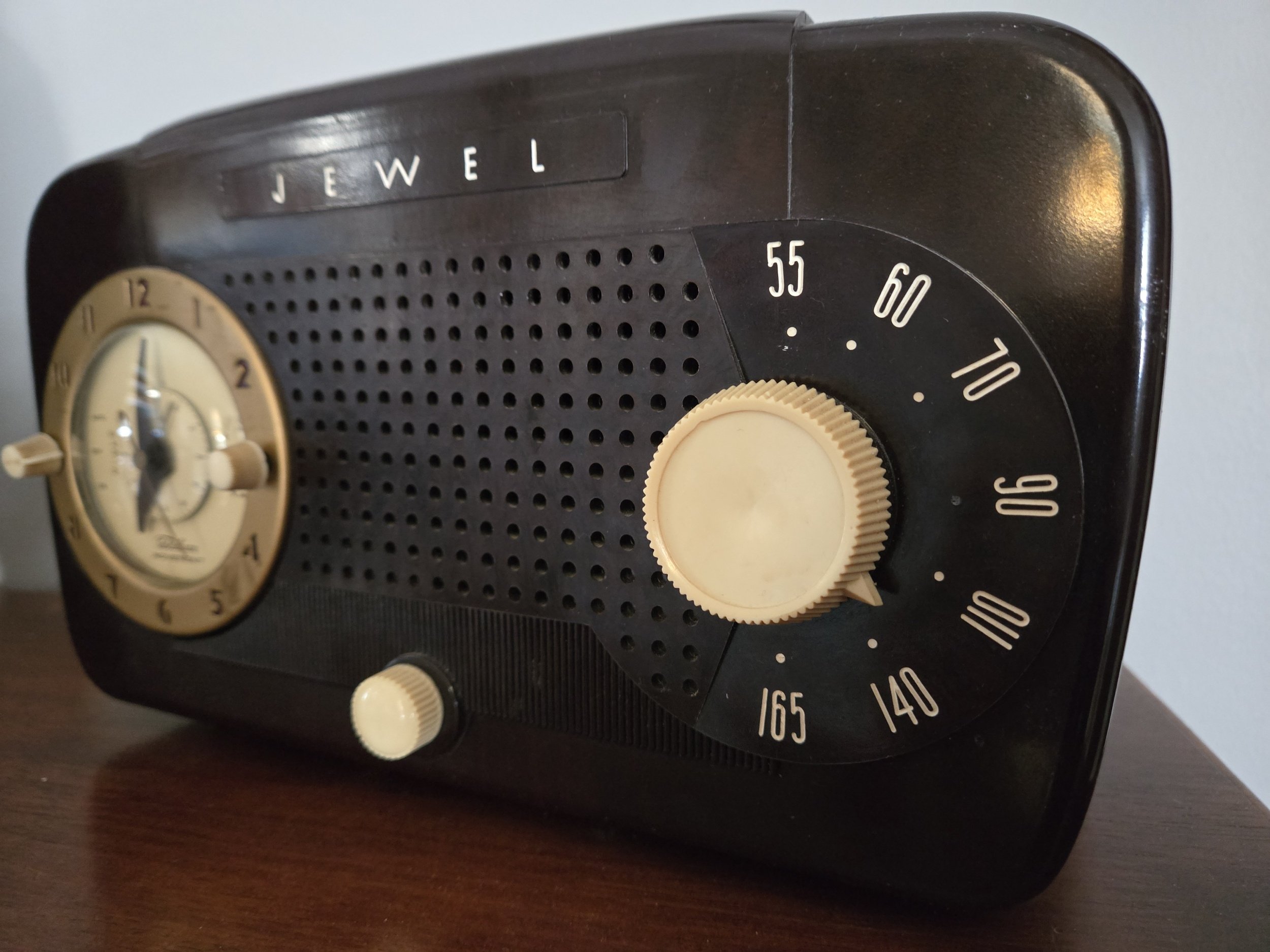Female Radio Pioneers: Ladies Who Stole the Airwaves
My vintage Jewel clock radio is pretty freaking cool: sleek Bakelite case, gold dials and old-school analog tuning. I know a thing or two about radio; my husband went from intern to program director all at the same station over the last 20+ years.
But beyond its mid-century design, it recalls an era when radio (and the men behind the mics) still ruled the world. And against all odds, a few bad-ass women carved out spaces behind the mic, in the control room and even in the executive suites – in a time when most women were being put on mute.
Women Who Kicked Ass on (and off) Air
Bertha Brainard (1890–1946): First Woman to Program a National Network
Image source: Wikipedia
In the beginning, radio was a novelty, something men in laboratories tinkered with while hobbyists built makeshift transmitters. But Bertha Brainard saw more.
She was a theater critic, but by 1923, Ms. Brainard was hosting and producing her own show, Broadcasting Broadway, for WJZ in Newark, NJ (not far from where I was born, actually). She recognized the potential of entertainment radio early, and by 1928, NBC had made her their first female executive. Pretty bad-ass, as it opened the door for other women to hold similar roles.
Brainard was the force behind variety radio shows, even pushing for Rudy Vallée’s show, one of the earliest network programs to feature celebrity performances. She believed that programming wasn’t just for men; she advocated for content that appealed to female listeners, too. Her vision, that radio could be an entertainment powerhouse, shaped the format we recognize today, even as her name fades into history.
Dorothy Thompson (1893–1961): The Woman Who Took on Hitler Himself
Image source: United States Holocaust Memorial Museum
By the 1930s, radio was how Americans got their news, and Dorothy Thompson was one of the first female voices behind it. After working for the New York State Woman Suffrage Party and helping secure the right for us ladies to vote, she became a journalist. In 1921, she infiltrated a German castle owned by King Karl I by pretending to be a nurse so that she could report from inside.
She followed the rise of Nazism and became the first American reporter to be expelled from Nazi Germany. This happened in 1934, after an unflinching interview with Hitler. She called him, and I quote, “a man whose countenance is a caricature, a man whose framework seems cartilaginous, without bones. He is inconsequent and voluble, ill-poised, insecure.”
This is all pretty bad-ass of you, Ms. Thompson. Those of us reading may want to take note.
Instead of backing down to bullying, she took her reporting to the radio. Through the 1930s and 40s, her political analysis could be heard across the country. She became one of the first female news commentators, a job (like so many others) that was almost exclusively held by men.
Time Magazine called her (along with Eleanor Roosevelt) one of the most influential women in America. It’s a shame that she has been mostly forgotten today.
Irna Phillips (1901–1973): Creator of the Soap Opera
Image Source: Jewish Women’s Archive
In a path far less political, but no less impactful on society, Irna Phillips is the woman who more or less invented the format known as the soap opera. In the 1930s, she created the series “Painted Dreams,” the first radio soap opera.
She began her radio career working for free over summer vacations. She later went on to write and/or produce a few more you may have heard of: “Guiding Light,” “One Life to Live” and “As the World Turns.” If that wasn’t enough, the creators of both “All My Children” and “The Young and the Restless” began their own careers under her tutelage. Not too shabby.
In her personal life, she made bold choices that were unusual for her time. She never married, yet adopted two children by herself. Her storytelling innovations, like cliffhangers, internal monologues and dramatic music cues, became standard techniques across radio and television.
Ora Nichols (1893–1951): Sound Engineer Who Stood Up to Orson Fucking Welles
Image Source: Wikipedia
In an era when sound effects were entirely mechanical, Ora Nichols was the undisputed master. She ran the first-ever radio sound effects department and was the only woman leading the development of sound effects during the Golden Age of radio, working for CBS and later collaborating with the famous Orson Welles.
Her partner and sound effects collaborator was her husband, Arthur Nichols. Together, they pioneered innovative ways to create sounds, recognizing that the “thing” that typically made the sound in real life may not be the best source for that same sound on the airwaves.
Nichols’ creativity and expertise in sound effects helped make Welles’ War of the Worlds (1938) so terrifyingly real. The clanking of metal, eerie alien sounds and simulated explosions that fooled listeners into thinking an actual Martian invasion was happening was all Nichols at work.
And she demanded respect. Apparently, during an argument, Welles called her a “screwball” in front of her entire crew. She walked out on his ass, right before a live broadcast. She demanded a public apology – from Orson Welles – and got one, after which, she returned to work.
I love this for you, Ms. Nichols.
Looking for more on vintage radios (and the women behind them)? Read my article: Antique Montgomery Ward Radio: The Forgotten Woman Behind Its Design.




